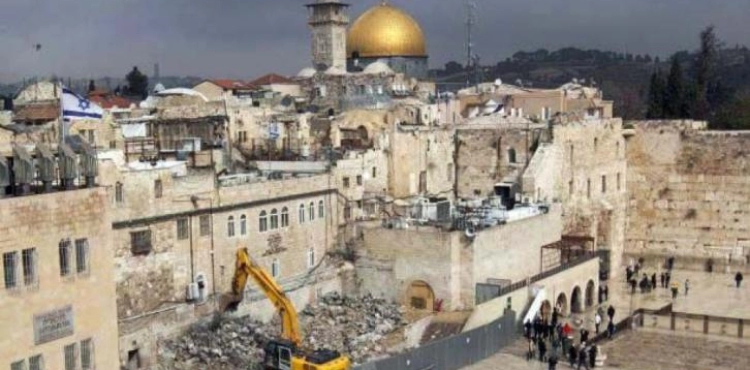The Secretary General of the Islamic Christian Authority for the Support of Jerusalem and the Holy Shrines Hanna Issa, said that the occupation authorities flood Jerusalem with settlers and settlements. Adding, that the occupation hit the city with three colonial cordon, the first cordoned off the Temple Mount and the Old City, and the second cordoned off the neighborhoods in Jerusalem and the third cordoned off the surrounding Palestinian villages.
And Issa stated that the occupation created a large number of settlement neighborhoods and settlements on the top of hills and valleys, and on the ruins of what was demolished Palestinian neighborhoods and villages and what was usurped of land, confining the people of the city to narrow and enclosed squares.
Amin Nasra Al-Quds pointed out that on the northern side of the city, the "Eshkol" neighborhood was built adjacent to the Sheikh Jarrah neighborhood, and the "Shapira" settlement neighborhood was built on the French Hill, in addition to a large settlement bloc on the Mount of Olives, and another in the name of "Ramot" On the lands of the Prophet Samuel, and the settlement of "Atarut" on the lands of Al-Ram and Beit Hanina. The occupation also established two neighborhoods on the lands of Jabal Al-Mukabber, and a third named "Gila" on the lands of Beit Safafa, then established two settlement neighborhoods on the lands of Sheikh Jarrah and on the middle section of Jabal Al-Masharif.
He explained that the occupation is seeking to isolate Jerusalem through the separation wall, which began building in June 2002, and said, "The Israeli occupation began implementing the first stage of the construction of the separation wall inside the West Bank, and extends from north to south of the West Bank and around Jerusalem, and its total length exceeds At 755 km, more than twice the length of the 1967 Green Line of 320 km, and its average width ranges between 60-80 meters, taking complex shapes and torsions on its journey. In areas that consist of cement with a height of 8 meters, it spreads watchtowers along it. Other places consist of a series of fences, some of which are electrified, and in others they include a trench S streets, barbed wire, cameras, and footprints. " He explained that the wall in Bethlehem consists of electrified fence, isolation areas, sensors, trenches, barbed wire and a bypass road, in order to completely isolate the city from the West Bank.
Hanna Issa warned of the excavations carried out by the occupation authorities under the old town and the blessed Al-Aqsa Mosque, noting that there is an acceleration in the excavations at the bottom of the old town towards the Al-Aqsa Mosque from all sides, for several reasons, the first of which is to reveal the Al-Buraq wall and show it completely, which means removing All the buildings adjacent to it and digging next to it to show its main stones, and the second reason is searching for the remains of the temple which the Zionists claim that the Al-Aqsa Mosque is standing on top of.
He added that upon the occupation of Jerusalem, the apparent size of the Al-Buraq Wall was no more than thirty yards, and the goal announced in 1969 was to uncover two hundred yards and more, knowing that the size of what had been revealed at that time amounted to 80 yards, which was accomplished by excavations that took place at The western wall, while at the south wall, excavations supervised by Professor Benjamin Mazar were detonated, followed by Moshe Dayan, then Minister of War, and he declared in 1971 that excavations should continue until the second structure was fully uncovered and restored.












